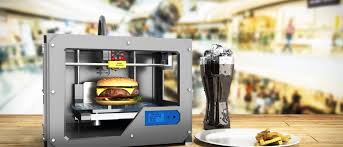
Imagine a world where your next meal is customized, nutritious, and printed layer by layer. 3D-printed food is moving from science fiction to reality, promising to revolutionize how we produce, consume, and experience food.
1. What Is 3D-Printed Food?
3D food printing uses additive manufacturing technology to create meals by layering edible ingredients precisely. Key components include:
- Food inks: Pureed ingredients, protein pastes, chocolate, or dough
- Printer mechanisms: Extrude, layer, and shape food into detailed designs
- Digital recipes: Software controls texture, flavor, and nutrient composition
This technology allows for highly customized meals in terms of taste, appearance, and nutritional content.
2. Benefits of 3D-Printed Meals
- Personalized nutrition: Meals can be tailored to specific dietary needs, allergies, or health goals.
- Reduced food waste: Precise portioning minimizes leftovers and overproduction.
- Sustainability: Uses alternative protein sources like insect flour or lab-grown meat efficiently.
- Culinary creativity: Chefs can create intricate designs impossible by hand.
- Accessibility: Potential for producing food in space missions, hospitals, or disaster zones.
3. Current Applications
- Gourmet restaurants: 3D printing is used for decorative chocolates, desserts, and avant-garde dishes.
- Healthcare: Hospitals can create nutrient-specific meals for patients with dietary restrictions.
- Space exploration: NASA and private space companies are exploring 3D food printers for astronauts.
- Food research: Scientists test new ingredients and textures for taste, sustainability, and nutritional optimization.
4. Challenges to Overcome
- Cost: Equipment and specialized ingredients are expensive, limiting widespread adoption.
- Taste and texture: Some 3D-printed foods still lag behind traditional cooking in flavor and mouthfeel.
- Regulation: Food safety and quality standards need to evolve with the technology.
- Public perception: Acceptance of printed meals may require overcoming skepticism about “artificial” food.
5. The Future of 3D-Printed Food
As 3D printing technology advances, meals may become fully personalized, nutritionally optimized, and environmentally sustainable. Integration with AI could allow automated meal planning based on personal health data, making dietary customization easier than ever.
Final Thoughts
3D-printed meals are more than a novelty—they represent a major innovation in food production and consumption. From sustainability to personalized nutrition, this technology has the potential to reshape the culinary world and our relationship with food.